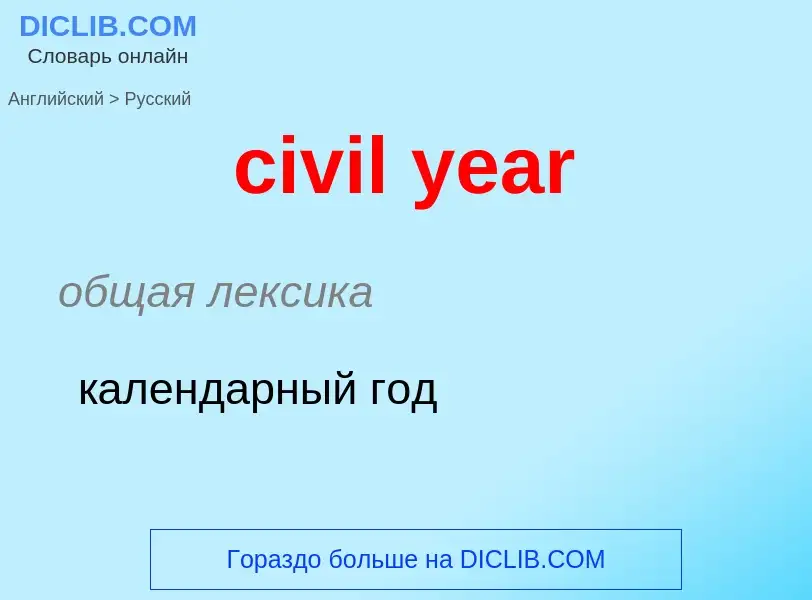Перевод и анализ слов искусственным интеллектом ChatGPT
На этой странице Вы можете получить подробный анализ слова или словосочетания, произведенный с помощью лучшей на сегодняшний день технологии искусственного интеллекта:
- как употребляется слово
- частота употребления
- используется оно чаще в устной или письменной речи
- варианты перевода слова
- примеры употребления (несколько фраз с переводом)
- этимология
civil year - перевод на русский
общая лексика
календарный год
Определение
Википедия
Generally speaking, a calendar year begins on the New Year's Day of the given calendar system and ends on the day before the following New Year's Day, and thus consists of a whole number of days. A year can also be measured by starting on any other named day of the calendar, and ending on the day before this named day in the following year. This may be termed a "year's time", but not a "calendar year". To reconcile the calendar year with the astronomical cycle (which has a fractional number of days) certain years contain extra days ("leap days" or "intercalary days").The Gregorian year, which is in use in most of the world, begins on January 1 and ends on December 31. It has a length of 365 days in an ordinary year, with 8760 hours, 525,600 minutes, or 31,536,000 seconds; but 366 days in a leap year, with 8784 hours, 527,040 minutes, or 31,622,400 seconds. With 97 leap years every 400 years, the year has an average length of 365.2425 days. Other formula-based calendars can have lengths which are further out of step with the solar cycle: for example, the Julian calendar has an average length of 365.25 days, and the Hebrew calendar has an average length of 365.2468 days. The Islamic calendar is a lunar calendar consisting of 12 months in a year of 354 or 355 days. The astronomer's mean tropical year, which is averaged over equinoxes and solstices, is currently 365.24219 days, slightly shorter than the average length of the year in most calendars.

